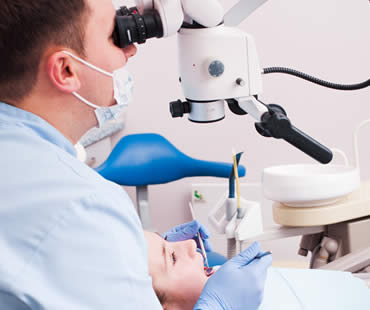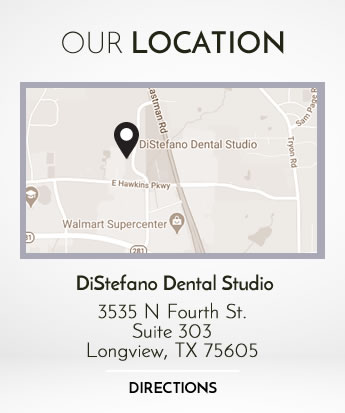
There are a number of reasons that dentists or oral surgeons recommend surgery, but facial injuries are probably the most unexpected and alarming cause. Maxillofacial injury, or facial trauma, refers to any injury to the mouth, jaw, and face. Most of these injuries result from sports, car accidents, job accidents, violence, or an accident at home. Let’s learn about oral surgery resulting from facial trauma.
Broken bones are a common type of serious facial injury. Fractures can occur in the upper or lower jaw, cheekbones, palate, and eye sockets. Injuries in these locations may affect vision and the ability to eat, talk, and breathe. Hospitalization is often required for treatment, which is similar to that for fractures in other parts of the body. The bones must be lined up and held in place to allow time to heal them in the correct position. Because casts are not possible in facial injuries, the surgeon may use wires, screws, or plates to treat fractures. Sometimes healing takes as long as six weeks or more.
Even though some facial injuries are worse than others, all of them should be taken seriously. They affect an important area of the body, so it is recommended to seek treatment from an oral surgeon to make sure you receive optimum care. Even if stitches are all that’s required, it’s best to have them performed by an oral surgeon who can place them exactly as needed to produce the best results.
It’s no surprise that the best solution for facial injuries is to prevent them in the first place. Oral surgeons suggest consistent use of mouth guards, seat belts, and masks and helmets as required. Improvements have been made to safety gear to make these items more comfortable and efficient, so there should be no excuses for not using them to protect yourself and avoid injuries that can lead to oral surgery.
Our dental office is located in Longview

A pretty smile has an immediate impact on those you meet. Without saying a word, it conveys that you take care of yourself and exudes a higher confidence level. A yellowed, dull, stained smile can send the opposite message. It can get in the way of presenting yourself in the best possible way.
Even when you practice good dental hygiene, your teeth are at risk of discoloration. Age, drinking and eating certain foods, and smoking each can negatively affect the shade of your teeth. You may be able to slow down the damage by avoiding such habits, but it’s nearly impossible to maintain the bright white smile of your youth. That’s when teeth whitening comes to the rescue.
There are a number of teeth whitening methods available today. Some of them involve buying over-the-counter products at your local drugstore for use at home, and others require a trip to see a professional. Choosing the most effective method for your teeth depends on the degree of discoloration or staining that you have, as well as your smile goals. The various methods have different levels of impact on the shade of your teeth.
Products for home use are inexpensive, readily available, and simple to use. Some popular options include whitening toothpastes, gels, and strips. Make sure you follow the directions carefully, and be patient because visible results can take some time of consistent use.
For quicker and more dramatic impacts to your smile, professional whitening is the way to go. Commercial methods employ more powerful ingredients than those available for home use. Also, special tools are often used such as ultraviolet lights to enhance the procedure. Professional whitening methods are able to improve much more severe stains and discolorations than home products. Whitening performed by a dental professional also usually lasts longer than what you might achieve at home.
The bottom line about teeth whitening is that it can be a fast and effective way to improve your look. Don’t go through life hiding your smile, but brighten your appearance with teeth whitening.
We treat patients from Longview and the surrounding area

Simple pleasures like enjoying a cup of coffee or sipping red wine can stain your teeth and leave you with a yellowed smile. Instead of giving up some of your favorite pastimes, you can restore your smile with professional teeth whitening. Home whitening options are available, but to achieve the fastest and most dramatic improvements, professional whitening methods are the way to go.
Teeth whitening is a quick and safe procedure, making it the most popular cosmetic dental procedure today. Some patients even have it done during their lunch break and go right back to work. It’s that easy! The process typically involves protecting your gums from becoming sensitive during treatment, and then applying a whitening solution to your teeth. The solution stays in place for a specific length of time and often a special ultraviolet light is shined on them to enhance the whitening process. Then your teeth are rinsed. The process might be repeated in some areas with severe stains, but the dental professional is careful not to over-whiten your teeth or cause discomfort.
You can choose the shade of white that you would like your teeth to be, and your cosmetic dentist will help you make the best choice. The goal should be to look natural and complement your skin tone. Since teeth whitening is a safe process, just about everyone is a candidate unless you have severely poor oral health. It is usually painless, although those with extremely sensitive teeth may have some discomfort that should dissipate shortly after treatment.
Rejuvenating your smile with teeth whitening is a simple way to make you look younger and enhance your smile. It also improves your self-esteem by giving you confidence in your appearance. A bright, white smile can be yours today through professional teeth whitening.
We look forward to seeing you in our Longview dental office

Wisdom teeth are the third set of molars and the last adult teeth to erupt into the mouth. Most people have four wisdom teeth, two on the bottom and two on top. Many people do not have enough room for these molars to emerge completely, causing them to become impacted in the gum. Impacted wisdom teeth are difficult to clean, making them more susceptible to decay and disease. Other dental problems caused by impacted wisdom teeth include pain, damage to surrounding teeth, and bite alignment issues. For these reasons, your dentist may recommend having the impacted teeth removed to prevent future problems.
Surgery to extract an impacted wisdom tooth or set of wisdom teeth is usually an outpatient procedure done in your dentist or oral surgeon’s office. If the tooth or surrounding area are deemed to have an infection prior to the procedure, surgery will be delayed, and your dental professional will likely prescribe antibiotics to help heal the area.
On the day of surgery, local anesthesia will be administered to numb the area where the extracted tooth will be removed. Depending on the severity of your case, your dentist or oral surgeon may also utilize a general anesthetic.
Once the anesthesia has taken effect, an incision will be made to open up the gum and any bone blocking the tooth will be removed. Your dentist or surgeon will then separate the tissue connecting the bone to the tooth and extract the tooth. Some teeth are too large to remove in one piece, in which case your surgeon will cut the tooth into smaller pieces to make it easier to remove. Finally, the incision is closed with stitches and packed with gauze to help alleviate bleeding.
Long-term complications from impacted wisdom tooth surgery are rare. To ensure a successful recovery from this or any oral surgery, be sure to follow all aftercare instructions provided by your dentist or oral surgeon.
If you live in the Longview area contact us today

Your family, general, or pediatric dentist or orthodontist may refer you to an oral and maxillofacial surgeon for some dental treatments that require oral surgery. An oral surgeon is a specialist who has graduated from an accredited dental school and also completed additional education and residency related to surgical procedures needed to treat various oral diseases and conditions. An oral surgeon is trained in treating the following conditions:
- Removal of diseased or impacted teeth
- Placement of dental implants
- Treatment of facial trauma involving gums, jaws, nasal cavities, cheekbones, eye sockets, and forehead
- Evaluation of pathologic conditions such as cysts and tumors of the mouth and face or acute infections of the oral cavity, salivary glands, neck, and jaws
- Treatment of facial pain including those caused by temporomandibular (TMJ) problems
- Cosmetic or reconstructive surgery to correct jaw, facial bone, and facial soft tissue problems
- Corrective jaw surgery
- Cleft lip and cleft palate repair
- Surgical treatment for sleep apnea
There are many different techniques that oral surgeons use to accomplish your treatment goals. The choice of techniques may vary between surgeons and should be discussed between you and your surgeon prior to the procedure.
Many oral surgery procedures can be completed in an outpatient setting. Often you are only in the office for a few hours and can return to your regular routine in a matter of days. A good oral surgeon will be able to perform these procedures with little chance of complications, and will be able to provide you with the information you need to understand the recovery process. Your oral surgeon will often collaborate with other specialists, such as an orthodontist or cosmetic dentist, to achieve your ultimate treatment goals.
If you need a dentist in Longview contact us today

Life is full of special events that you will remember forever. When you look back at photographs from your special days, you will want to know that you looked your very best. Weddings, birthdays, reunions, graduations, anniversaries, job interviews, or that very special first date are times you will want to put your best face forward. Everything begins with your smile. Your dentist can help you prepare for these kinds of events by brightening your smile, making you look younger and more vibrant and boosting your self-confidence.
Your teeth naturally discolor with age, and this process is accelerated as you eat various foods and dark beverages. Blueberries, blackberries, and beets can all leave stains on your teeth. Dark sodas, coffee, tea, and red wine can also leave their mark with residual color on your teeth. Don’t find yourself feeling self-conscious about your discolored smile; talk to your dentist about what teeth whitening options are available to you. Not all whitening processes are good for every type of teeth. Your dentist will know what is ideal for you.
Before you whiten, it is important to have a dental exam and cleaning. The results of your whitening depend on the initial condition of your teeth. Cleaning your teeth ensures that the whitening procedure affects all of the areas of your teeth, and doesn’t leave out areas currently hidden by plaque or tartar.
Because some teeth whitening techniques require time to achieve the best results, you need to plan ahead. Begin with a consultation with your dentist several weeks prior to your special day, to allow time for the whitening process to work. Some people experience increased sensitivity to their teeth after whitening. Starting early will allow your teeth to recover from the whitening process.
A brighter smile will always help you look and feel better. It will help you make the most positive first impression. On your special day, when you smile for the camera, your confidence will show. You’ll love what you see in photos for years to come.
Our dental office is located in Longview









